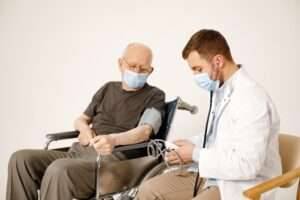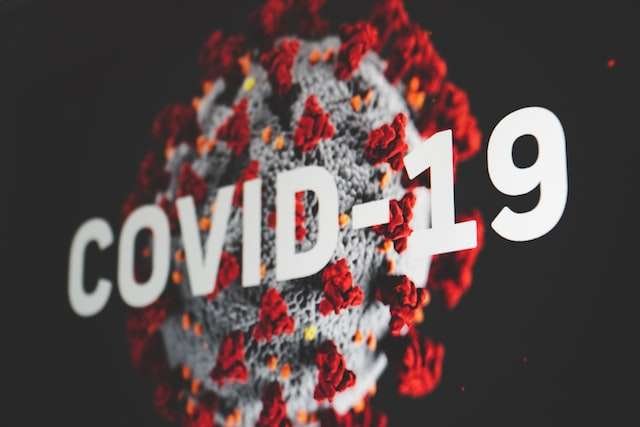
Parkinson’s disease affects the nerve cells in the brain that produce dopamine. Parkinson’s disease symptoms include muscle rigidity, tremors, and changes in speech and gait. After diagnosis, treatments can help relieve symptoms, but there is no cure.
Parkinson’s disease symptoms and signs may vary from person to person. Early signs may be mild and may go unnoticed. Symptoms often begin on one side of your body and usually remain worse on that side, even after symptoms start to affect both sides.
The Symptoms are:
Tremor. A tremor, or shaking, usually starts in a limb, often your hand or fingers. You may notice a back-and-forth rubbing of your thumb and forefinger, known as a pill-rolling tremor. One characteristic of Parkinson’s disease is a tremor of your hand when it is relaxed or at rest).
Slowed movement (bradykinesia). Over time, Parkinson’s disease may reduce your ability to move and slow your movement, making simple tasks difficult and time-consuming. Your steps may become shorter when you walk, or you may find it difficult to get out of a chair. Also, you may drag your feet as you try to walk, making it difficult to move.
Rigid muscles. Muscle stiffness may occur in any part of your body. The stiff muscles can limit your range of motion and cause you pain.
Impaired posture and balance. Your posture may become stooped, or you may have balance problems as a result of Parkinson’s disease.
Loss of automatic movements. In Parkinson’s disease, you may have a decreased ability to perform unconscious movements, including blinking, smiling or swinging your arms when you walk.
Speech changes. You may have speech problems as a result of Parkinson’s disease. You may speak softly, quickly, slur or hesitate before talking. Your speech may be more of a monotone rather than with the usual inflections.
Writing changes. It may become hard to write, and your writing may appear small.
Causes
In Parkinson’s disease, certain nerve cells (neurons) in the brain gradually break down or die. Many of the symptoms are due to a loss of neurons that produce a chemical messenger in your brain called dopamine. When dopamine levels decrease, it causes abnormal brain activity, leading to signs of Parkinson’s disease. The cause of Parkinson’s disease is unknown, but several factors appear to play a role, including:
Your genes. Researchers have identified specific genetic mutations that can cause Parkinson’s disease, but these are uncommon except in rare cases with many family members affected by Parkinson’s disease. However, certain gene variations appear to increase the risk of Parkinson’s disease but with a relatively small risk of Parkinson’s disease for each of these genetic markers.
Environmental triggers. Exposure to certain toxins or environmental factors may increase the risk of later Parkinson’s disease, but the risk is relatively small.Many changes occur in the brains of people with Parkinson’s disease, although it’s not clear why these changes occur. These changes include:
The presence of Lewy bodies. Clumps of specific substances within brain cells are microscopic markers of Parkinson’s disease. These are called Lewy bodies, and researchers believe these Lewy bodies hold an important clue to the cause of Parkinson’s disease.
Alpha-synuclein is found within Lewy bodies. Although many substances are found within Lewy bodies, scientists believe an important one is the natural and common protein called alpha-synuclein (A-synuclein). It’s found in all Lewy bodies in a clumped form that cells can’t break down. This is currently an important focus among Parkinson’s disease researchers.
Risk factors for Parkinson’s disease include:
Age. Young adults rarely experience Parkinson’s disease. It ordinarily begins in middle or late life, and the risk increases with age. People usually develop the disease around age 60 or older.
Heredity. Having a close relative with Parkinson’s disease increases the chances that you’ll develop the disease. However, your risks are still small unless you have many relatives in your family with Parkinson’s disease.
Sex. Men are more likely to develop Parkinson’s disease than are women.
Exposure to toxins. Ongoing exposure to herbicides and pesticides may put you at a slightly increased risk of Parkinson’s disease.
Parkinson’s disease is often accompanied by these additional problems, which may be treatable:
Thinking difficulties. You may experience cognitive problems (Dementia) and thinking difficulties, which usually occur in the later stages of Parkinson’s disease. Such cognitive problems aren’t very responsive to medications.
Depression and emotional changes. People with Parkinson’s disease may experience depression. Receiving treatment for depression can make it easier to handle the other challenges of Parkinson’s disease. You may also experience other emotional changes, such as fear, anxiety or loss of motivation. Doctors may give you medications to treat these symptoms.
Swallowing problems. You may develop difficulties with swallowing as your condition progresses. Saliva may accumulate in your mouth due to slowed swallowing, leading to drooling.
Sleep problems and sleep disorders. People with Parkinson’s disease often have slept problems, including waking up frequently throughout the night, waking up early or falling asleep during the day.
People may also experience rapid eye movement sleep behavior disorder, which involves acting out your dreams. Medications may help your sleep problems.
Bladder problems. Parkinson’s disease may cause bladder problems, including being unable to control urine or having difficulty urinating.
Constipation. Many people with Parkinson’s disease develop constipation, mainly due to a slower digestive tract.
You may also experience:
Blood pressure changes. You may feel dizzy or lightheaded when you stand due to a sudden drop in blood pressure (orthostatic hypotension).
Smell dysfunction. You may experience problems with your sense of smell. You may have difficulty identifying certain odors or the difference between odors.
Fatigue. Many people with Parkinson’s disease lose energy and experience fatigue, and the cause isn’t always known.
Pain. Many people with Parkinson’s disease experience pain, either in specific areas of their bodies or throughout their bodies.
Sexual dysfunction. Some people with Parkinson’s disease notice a decrease in sexual desire or performance
Treatment: Parkinson’s disease can’t be cured, but medications can help control your symptoms, often dramatically. In some later cases, surgery may be advised. Your doctor may also recommend lifestyle changes, especially ongoing aerobic exercise. In some cases, physical therapy that focuses on balance and stretching also is necessary. A speech-language pathologist may help improve your speech problems.
Medications: Medications may help you manage problems with walking, movement, and tremor. These medications increase or substitute for dopamine, a particular signaling chemical (neurotransmitter) in your brain.
People with Parkinson’s disease have low brain dopamine concentrations. However, dopamine can’t be given directly, as it can’t enter your mind.
You may have significant improvement in your symptoms after beginning Parkinson’s disease treatment. Over time, however, the benefits of drugs frequently diminish or become less consistent, although symptoms usually can continue to be relatively well-controlled.
There are several medications to reduce the symptoms, but they cannot be entirely cured. Surgical procedures: Deep brain stimulation (DBS). In deep brain stimulation (DBS), surgeons implant electrodes into a specific part of your brain. The electrodes are connected to a generator implanted in your chest near your collarbone that sends electrical pulses to your brain and may reduce your Parkinson’s disease symptoms. Deep brain stimulation is most often offered to people with advanced Parkinson’s disease who have unstable medication (levodopa) responses. DBS is effective in controlling erratic and fluctuating responses to levodopa or for controlling dyskinesias that don’t improve with medication adjustments. Although DBS may provide sustained benefit for Parkinson’s symptoms, it doesn’t keep Parkinson’s disease from progressing.

CANCER is also known as a malignant tumor, is a group of diseases involving abnormal cell growth with the potential to invade or spread to other parts of the body. Not all tumors are cancerous; benign tumors do not spread to other regions of the body.
Possible signs and symptoms include a new lump, abnormal bleeding, a prolonged cough, unexplainedweight loss, and a change in bowel movements among others.[ While these symptoms may indicate cancer, they may also occur due to other issues. There are over 100 different known cancers that affect humans.
Tobacco (Smoking) use is the cause of about 22% of cancer deaths. Another 10% is due to obesity, a poor diet, lack of physical activity, and consumption of alcohol. Other factors include certain infections, exposure to ionizing
Many cancers can be prevented by not smoking, maintaining a healthy weight, not drinking too much alcohol, eating plenty of vegetables, fruits, and whole grains, being vaccinated against certain infectious diseases, not eating too much processed and red meat, and avoiding too much exposure to sunlight. Early detection through screening is useful for cervical and colorectal cancer. The benefits of screening for breast cancer are controversial. Cancer is often treated with some combination of radiation therapy, surgery, chemotherapy, andtargeted therapy. Pain and symptom management are an important part of care. Palliative care is particularly important in those with advanced disease. The chance of survival depends on the type of cancer and extent of illness at the start of treatment. In children under 15 at diagnosis, the five-year survival rate in the developed world is on average 80%. For cancer in the United States, the average five-year survival rate is 66%.



